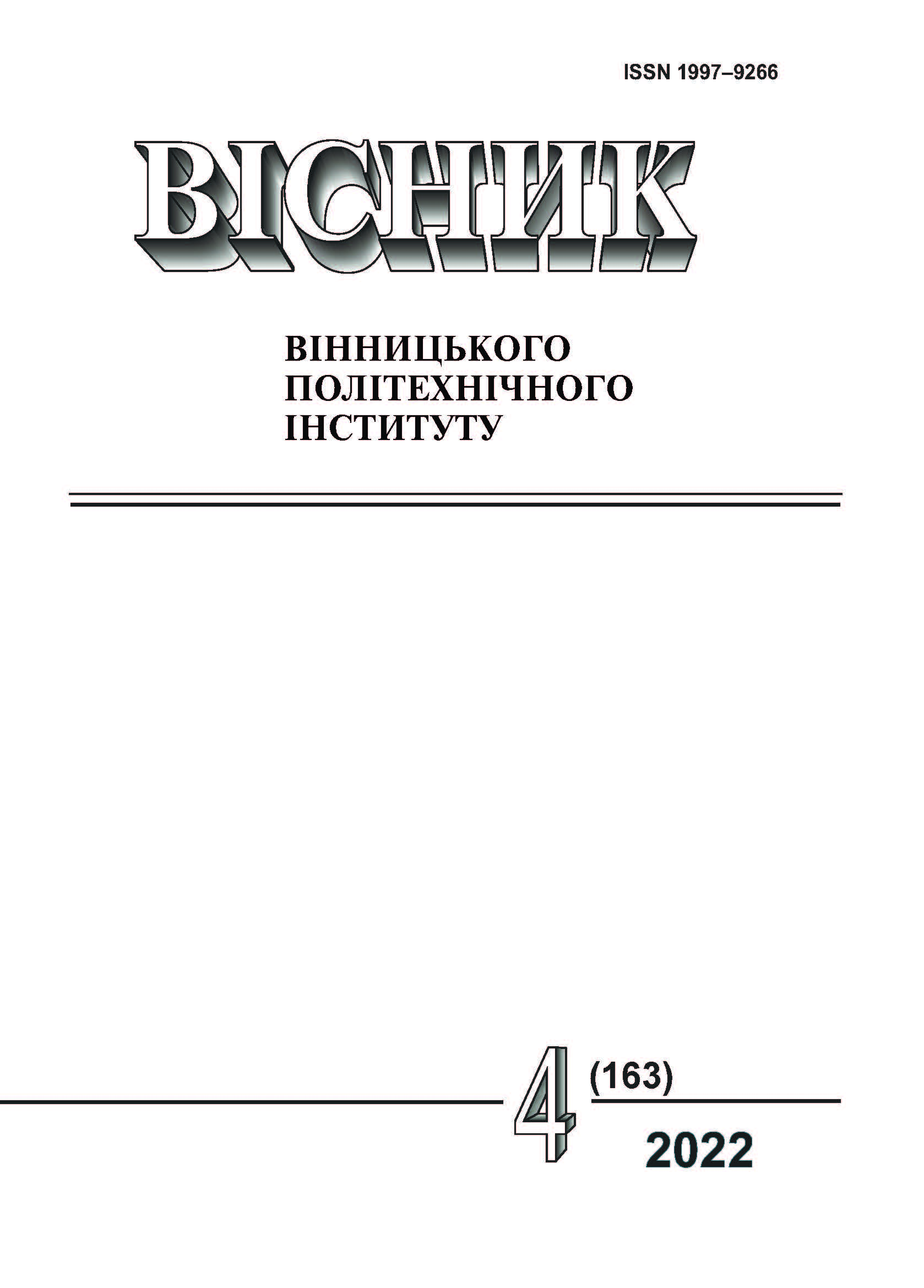Relaxation and Acoustic Characteristics of Polymer Nanocomposites Based on Polyethylene Oxide and Silver Nanoparticles
DOI:
https://doi.org/10.31649/1997-9266-2022-163-4-97-102Keywords:
silver nanoparticles, polymer nanocomposites, relaxation time, activation energy, speed of sound, damping coefficientAbstract
Polymeric nanocomposite materials containing silver nanoparticles are promising because they combine the properties of a polymer and an inorganic substance. Such materials have wide practical applications, in particular as antimicrobial coatings and structural materials. The vast majority of works study the properties of materials based on polymers and silver nanoparticles without explaining the processes of interaction between the matrix and the filler. However, one of the most informative is the relaxation characteristics, the study of which will allow us to establish the mechanisms of impact of nanoparticles and predict the final properties of the material. The purpose of this work was to create a new material based on polyethylene oxide (PEO) and silver nanoparticles, as well as to study its relaxation characteristics. The paper developed a new approach to the synthesis of silver nanoparticles. Using this approach, stabilized silver nanoparticles were synthesized. Using the method of dielectric relaxation and acoustic spectroscopy, the relaxation and acoustic characteristics of polymer nanocomposite materials based on PEO and synthesized silver particles were investigated. As a result, it was established that stabilized silver nanoparticles significantly affect the relaxation and acoustic characteristics of the nanocomposite material at relatively low concentrations of the nanofiller (1 %). The activation energy and relaxation time of PEO macromolecules, as well as the speed of ultrasound and the damping coefficient of the studied materials were extremely dependent on the content of the filler. This dependence is explained by aggregation processes of nanoparticles in the polymer matrix. It is shown that 1 % of silver nanoparticles in the system is optimal, and it is assumed that with this filler content, the functional characteristics will be the most acceptable for the use of such a material.
References
J. Wan, B. Fan, and S. H. Thang, “Sonochemical preparation of polymer–metal nanocomposites with catalytic and plasmonic properties,” Nanoscale Adv., vol. 3, рр. 3306-3315, 2021.
D. Giliopoulos, A. Zamboulis, D. Giannakoudakis, D. Bikiaris, and K. Triantafyllidis, “Polymer/Metal Organic Framework (MOF) Nanocomposites for Biomedical Applications,” Molecules, vol. 25, no. 1, pр. 185, 2020.
T. Bruna, F. Maldonado-Bravo, P. Jara, and N. Caro, “Silver Nanoparticles and Their Antibacterial Applications,” Int. J. Mol. Sci., vol. 22, pр. 7202, 2021.
D. Olmos, and J. González-Benito, “Polymeric Materials with Antibacterial Activity: A Review,” Polymers (Basel), vol. 13, no. 4, pр. 613, 2021.
M. Jokar, K. Loeschner, and A. M. Nafchi, “Modeling of Silver Migration from Polyethylene Nanocomposite Package Response Surface Methodology,” International Journal of Food Engineering, vol. 2, no. 2, pр. 96-102, 2016.
I. Bouknaitir et al., “Thermal properties and electric modulus approach to the analysis of dielectric relaxation of nanocomposites based on carbon dots,” Polymer Composites, pр. 1-8, 2019.
G. Sahu, M. Das, M. Yadav, B. P. Sahoo, and J. Tripathy, “Dielectric Relaxation Behavior of Silver Nanoparticles and Graphene Oxide Embedded Poly(vinyl alcohol) Nanocomposite Film: An Effect of Ionic Liquid and Temperature,” Polymers, vol. 12, pр. 374, 2020.
S. More, R. Dhokne, and S. Moharil, “Dielectric relaxation and electric modulus of polyvinyl alcohol–Zinc oxide composite films,” Mater. Res. Express, vol. 4, pр. 055302, 2017.
V. Shilov, V. Sperkach, Y. Sperkach, and A. Strybulevych, “Acoustic Relaxation of Liquid Poly(tetramethylene oxide) with Hydroxyl and Acyl Terminal Groups,” Polymer Journal, vol. 34, no. 8, pp. 565-574, 2002.
R. Zhang, W. Cao, Q. Zhou, J. H. Cha, K. K. Shung, and Y. Huang, “Acoustic Properties of Alumina Colloidal/Polymer Nano-Composite Film on Silicon,” in IEEE Transactions on Ultrasonics, Ferroelectrics, and Frequency Control, vol. 54, no. 3, рр. 467-469, 2007.
V. V. Shevchenko et. al., “Protic and aprotic anionic oligomeric ionic liquids,” Polymer, vol. 55, no. 16, рр. 3349-3359, 2014.
Y. Shangguan, F. Chen, E. Jia, Y. Lin, J. Hu, and Q. Zheng, “New Insight into Time-Temperature Correlation for Polymer Relaxations Ranging from Secondary Relaxation to Terminal Flow: Application of a Universal and Developed WLF Equation,” Polymers, vol. 9, pр. 567, 2017.
V. V. Klepko, B. B. Kolupaev, E. A. Lysenkov, and M. O. Voloshyn, “Viscoelastic properties of filled polyethylene glycol in the megahertz frequency band,” Materials Science, vol. 47, no. 1, рр. 14-20, 2011.
Downloads
-
PDF (Українська)
Downloads: 95
Published
How to Cite
Issue
Section
License

This work is licensed under a Creative Commons Attribution 4.0 International License.
Authors who publish with this journal agree to the following terms:
- Authors retain copyright and grant the journal right of first publication.
- Authors are able to enter into separate, additional contractual arrangements for the non-exclusive distribution of the journal's published version of the work (e.g., post it to an institutional repository or publish it in a book), with an acknowledgment of its initial publication in this journal.
- Authors are permitted and encouraged to post their work online (e.g., in institutional repositories or on their website) prior to and during the submission process, as it can lead to productive exchanges, as well as earlier and greater citation of published work (See The Effect of Open Access).





